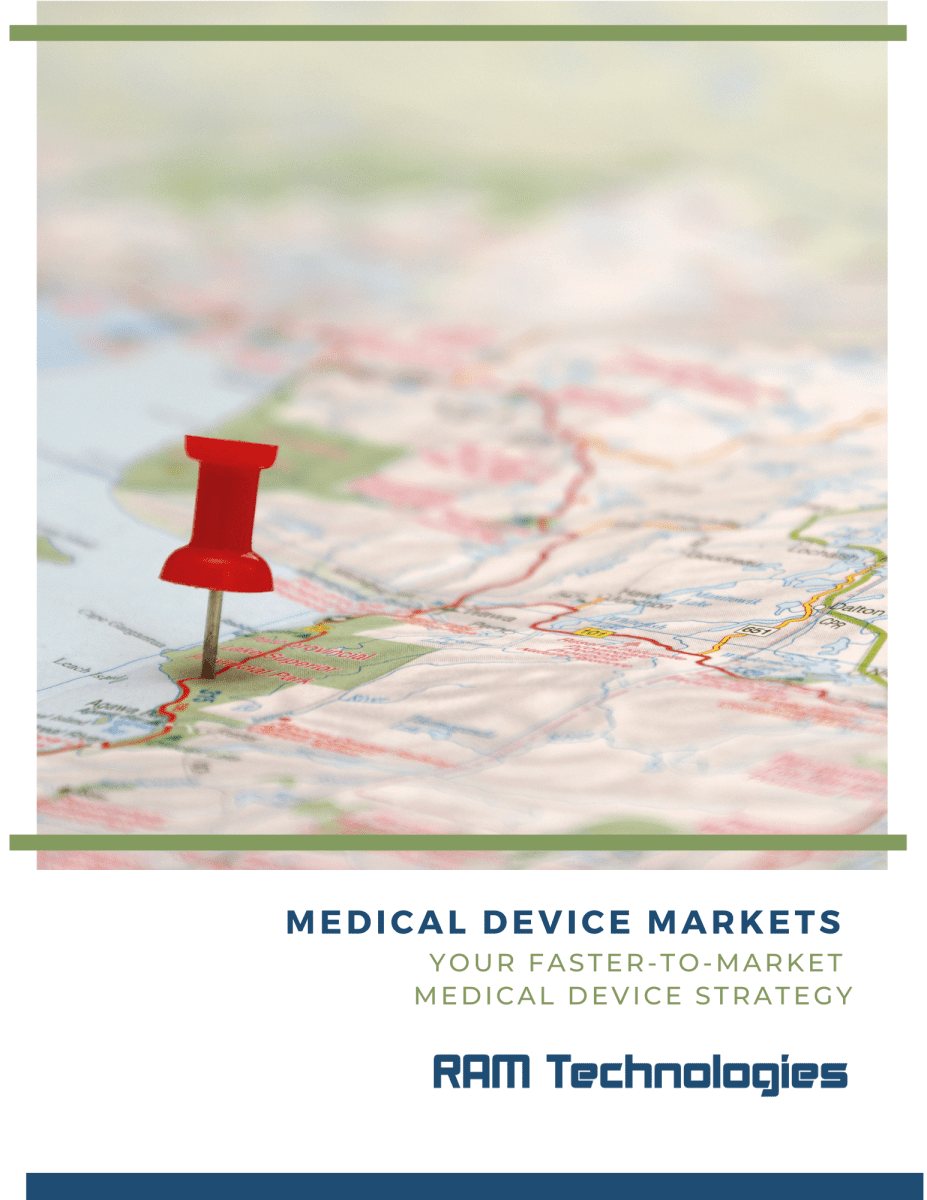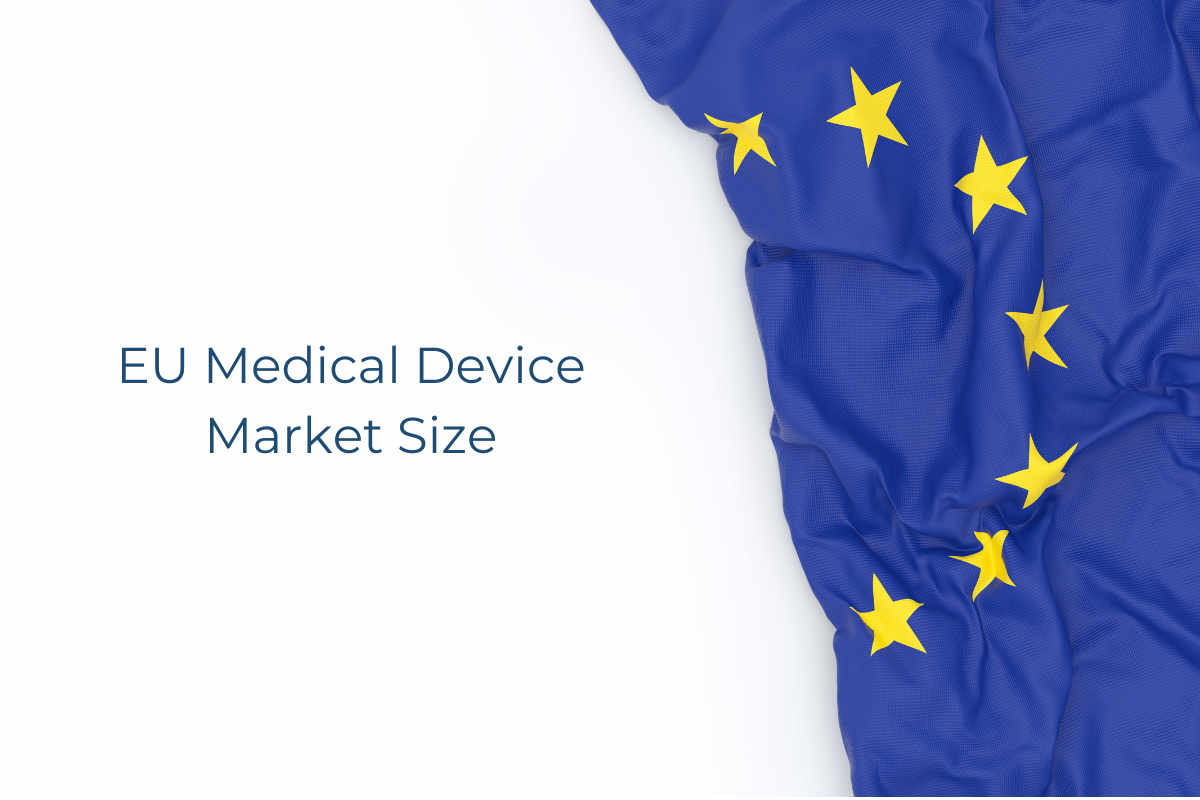If you’re asking yourself, “should I sell my medical device in the EU or U.S.?” you need to be mindful of both the market and regulatory requirements involved in selling in each region. This blog will cover the market size and growth of medical devices in the EU.
What’s Europe’s medical device market size?
Medical technology, which includes medical devices, in vitro diagnostics, and digital health tools and services, is a €150 billion market. According to MedTech Europe, a European trade association for the medical technology industry, the EU makes up 27.3% of the total global market and represents the 2nd largest market, with the U.S. taking the first-place spot (at 43.5%).
Germany, France, the United Kingdom, Italy, and Spain have the largest markets within the EU. Germany has the largest market share for medical devices in the EU at 25.8%, followed by France at 14.3%.
Growth in the EU has varied from year to year for medical devices, ranging between 2.4% and 9.3% between 2009 and 2021. The top import supplier to the medical devices market in Europe is the U.S. at 42.4%.
What is MDR?
Medical Device Regulation (MDR) was adopted in April 2017 in the EU. Regulation (EU) 2017/745 went into effect on May 26, 2021. This replaced previous directives and also separated medical devices from in vitro diagnostics, which are now dealt with under a distinct regulation (IVDR).
For manufacturers who want to sell medical devices in the EU, abiding by MDR is mandatory. If you were previously covered by the Medical Devices Directive (MDD), that doesn’t mean that you will automatically be covered by MDR. The new regulations have additional considerations for software and for the changing demographics of the EU, with larger aging populations and greater urgency for transparency in medical device information.
The medical devices covered by MDR include anything that is an “instrument, apparatus, appliance, software, implant, reagent, material, or other article” used for a wide range of medical purposes, the details of which can be found in Article 2 of MDR documentation. The newest guidance also outlines which products need to obtain a CE marking, which indicates conformity to the EU standards.
What should U.S. manufacturers know about MDR?
Even though there were plans to implement and enforce MDR by now, notified bodies are experiencing a backlog that is slowing down the entire process. This can mean up to a 12-24 month wait for a conformity assessment. The slowdown has come from manufacturers not being adequately prepared for regulatory changes, continuing effects from the COVID-19 pandemic, and global supply chain impacts of the conflict in Ukraine, among other things.
In response to the backlog, new transition deadlines have been set for the industry:
- December 31, 2027: High-risk Class III and Class IIb implantable devices (excluding some products such as sutures, dental fillings, screws, pins, etc.)
- December 31, 2028: Medium and lower-risk devices, including some Class IIb, Class IIa, and Class I devices
- May 26, 2026: Class III implantable custom-made devices *Note: They do also need to apply for a conformity assessment by May 26, 2024, with a notified body
- Legacy devices need to submit applications for the conformity assessment by May 26, 2024
- May 26, 2024: Manufacturers need to have a quality management system (QMS) in place
Some are arguing that MDR has caused harm to innovation in the region. The process of getting to market is becoming much easier in the U.S., and in the EU, things are moving in the opposite direction.
Even though there are extended timelines to comply, there is still the case of the bottleneck. Manufacturers looking to sell in the EU should keep pushing forward as planned to make it through but need to be mindful of weighing the costs and benefits of seeking approval in the region.
Can you make a business case for MDR?
Manufacturers should be thinking about market share, time to market, cost to get approved in the first place, and competition, and use these to project revenue. Lean RAQA estimates half of a percent of market share in the first year as a “best-case scenario.” One of the biggest hurdles at this point might be getting a notified body to work with you in a timely manner.
If it’s not looking good, it may be better to focus on the FDA for now. If you have questions about compliance for PSUs and what will work for your medical device, depending on your desired markets, reach out today.
________________________
RAM Technologies’ power supplies are 60601-1 3.2 certified and meet 60601-1-2 EMC standards. When you’re designing your medical device and need help with a PSU, contact us for details.

Download the Markets Guide
This guide covers the basics on medical device markets, including emerging trends, current regulations, and market adoption strategies. Sign up and download it for free now!
